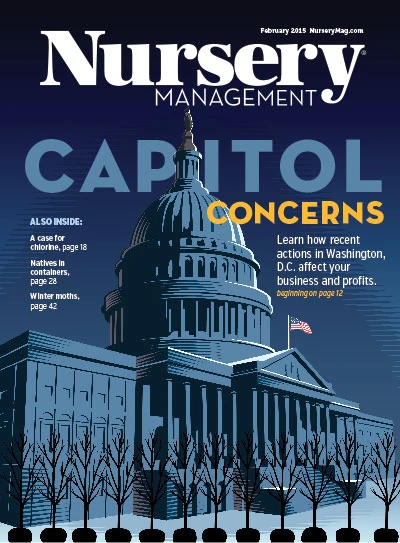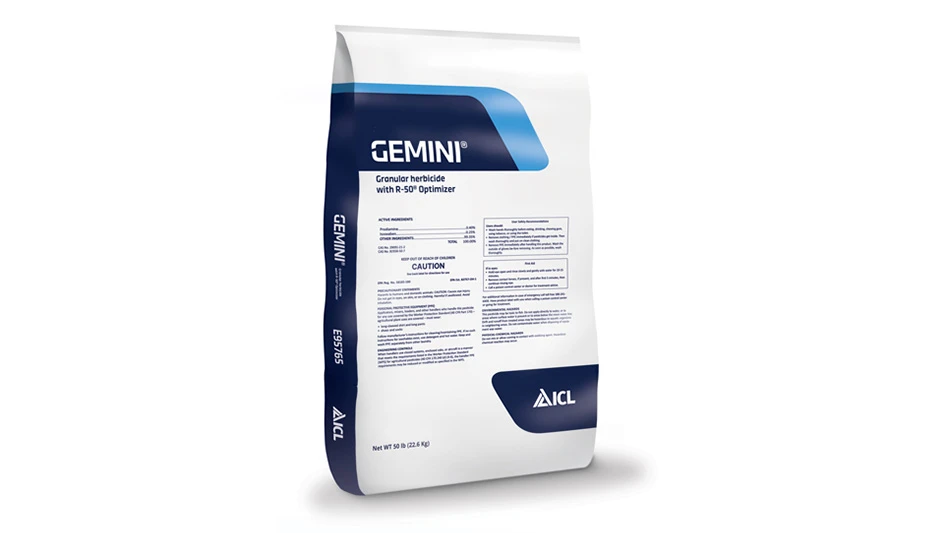
 We spoke to Craig Regelbrugge, Senior Vice President of Industry Advocacy & Research at AmericanHort about some of the important political developments happening in our nation’s capitol and how they may shape the day-to-day business operations at nurseries across the country.
We spoke to Craig Regelbrugge, Senior Vice President of Industry Advocacy & Research at AmericanHort about some of the important political developments happening in our nation’s capitol and how they may shape the day-to-day business operations at nurseries across the country.
NM: What’s the latest update regarding President Obama’s executive action on immigration?
CR: The president’s executive actions are being challenged both in Congress (funding prohibition) and in the courts. The Congressional effort has already drawn a veto threat and is virtually certain to fail. The courts are always more uncertain, and the states mounting the challenge got a judge who may be favorable to their view, but most believe that the court challenge will also fail.
NM: How does the executive action affect nurseries and their labor pool?
CR: For starters, it redirects enforcement-related resources to the border and criminal aliens. Beyond that, the program of greatest interest — and controversy — is the new “deferred action for parents” program. Individuals who have been continuously present for at least five years (since January 1, 2010), who have a U.S.-born or legal permanent resident child, and who pass a background check can apply to receive relief from the threat of deportation, as well as work authorization, for a three year period.
Employers need to understand a couple things. First, the Deferred Action for Parents program is NOT an employment-based program. There really isn’t a formal role for employers. That said, when DHS issues guidance (probably around April for a mid-May launch), proof of employment history may be a way to demonstrate continuous presence. So we’re advising AmericanHort members on how to position themselves to avoid potential legal liabilities under U.S. immigration law. Secondly, again from an employment perspective, it is not a “solution.” It does not create more workers to address labor shortage situations. Indeed, it is possible that those who apply and receive work authorization may have more employment options, such as in industries where use of the E-Verify program is commonplace, like construction. So the bottom line is, while some may seek and get relief under the program, legislation is ultimately needed to fix what’s broken.
Our best case for legislative action depends on two developments. One, a critical mass of Republicans (starting in the House) arriving at the conclusion that the best way to overcome the president’s administrative actions is to replace them with legislation. Good legislation. And for a critical mass of Democrats to decide that solutions on the ground are preferable to “having the issue” for electoral purposes. If legislation moves this year, it will probably start in the House. And the conversation will start with the border. There are many difficult obstacles ahead, but progress is possible.
NM: What should growers know about the H-2A and H-2B programs for the coming year?
CR: We are in ongoing defense of the current visa programs applicable to our industry. Both need major improvements, but meanwhile, we’re fighting a hostile bureaucracy that seems intent on making difficult and unreliable programs worse. The H-2B program is in more chaos than H-2A. We won one victory in federal court, against a total program rewrite, but we’re fighting other battles, for instance, how wages are determined.
NM: Growers have no doubt been affected by the Affordable Care Act. What are the latest developments in Washington, D.C. concerning this legislation?
CR: Republicans may continue to talk about repeal of the ACA, and maybe even repeal and replace. But the reality is, there probably aren’t 60 votes in the Senate, and the President’s veto pen is full of fresh ink.
We just saw the House approve a bill redefining “full time” as 40 hours. There is no clear path forward to enactment.
One area where there might be just enough bipartisan support to get something done is the so-called STARS Act. The ACA has different definitions of “seasonal” for different purposes, such as determining if you are a large employer under the law, and to whom you must offer coverage. STARS would align those definitions at six months. This change would be a modest improvement, not going nearly as far as we believe it should. But the bipartisan support isn’t there to do much more. Such small tweaks are possible in this environment.
NM: It’s been a little more than a year, but 2014 ushered in a new Farm Bill. What are the highlights of the bill that have an impact on the green industry?
CR: The bill features several extremely important pest and disease prevention, research, and other programs of direct interest and benefit to horticulture. Over the past few years, AmericanHort has helped to secure and direct millions in research and development funding to target urgent challenges like boxwood blight and impatiens downy mildew. The bill also directed the Obama Administration to allow the Christmas tree industry’s self-funded promotion and research program to go forward. However, USDA and White House foot-dragging meant another year of lost opportunity for ornamental tree growers.
NM: Last year brought a victory regarding certain tax issues. Please explain.
CR: A full court press by AmericanHort leaders and staff persuaded key House Ways and Means Committee members of the wisdom of allowing nursery and greenhouse growing operations to use the cash method of accounting. Of course, broader tax reform did not move forward, so this fight goes on but the hard fought changes in the bill’s draft language will serve us well when Congress eventually picks this issue up again. Congress also extended through 2014 various exemptions and deductions collectively known as “tax extenders.” However despite vigorous objection by outgoing Senate Finance Chairman Ron Wyden (D-OR), these measures were not made permanent.
NM: What are some other concerns that are circling around Capitol Hill?
CR: The last two years of the Obama administration are likely to bring last-ditch efforts by various federal agencies to seek potentially hostile regulatory changes. These could include a new iteration of the EPA’s “Waters of the U.S.” rule, a new Worker Protection Standard for growing operations that use pesticides, and Labor Department changes to the H-2A and H-2B programs.
NM: While it’s not a legislative issue, AmericanHort is helping the industry learn more about rose rosette disease. What else can you tell us?
CR: Roses are an iconic garden plant and a major revenue source for horticulture businesses. Yet a malady known as rose rosette disease is a direct threat to successful production and landscape use of garden roses. AmericanHort helped to secure $4.6 million in Specialty Crop Research Initiative funding for a multi-institution, multi-year collaborative project to get to solutions. Dr. David Byrne at Texas A&M University will lead the effort. Also, AmericanHort secured $100,000 in USDA-APHIS funding for rose rosette disease diagnostics work.
 NM: The subject of pollinators was, and continues to be, a hot topic for all of horticulture. What should growers know about this issue going into 2015?
NM: The subject of pollinators was, and continues to be, a hot topic for all of horticulture. What should growers know about this issue going into 2015?
CR: Pollinator health and pesticide use have taken the stage as a major environmental issue. Like it or not, horticultural businesses are in the middle of the drama. In response, the Horticultural Research Institute and AmericanHort have launched a Bee and Pollinator Stewardship Initiative to identify how our industry can be part of the solution to some of pollinator health concerns. An industry task force is developing a best practices program, and a dialogue has been established with honeybee and pollinator groups to explore how we can work together to promote pollinator health.
For more: www.americanhort.org

Explore the February 2015 Issue
Check out more from this issue and find your next story to read.
Latest from Nursery Management
- March 2025 issue recap
- Gratitude as a marketing strategy
- Leading Women of Horticulture: Katie Dubow, Garden Media Group, and Aubry Field, Lizzy Blossom
- Leading Women of Horticulture: Arden Pontasch, North Creek Nurseries
- Super Charged Moon Juice from Moon Valley Nurseries now available nationally
- 2025 Proven Winners Horticulture Scholarship applications now open
- Leading Women of Horticulture: Anna Ball, Ball Hort, and Terri McEnaney, Bailey Nurseries
- Leading Women of Horticulture: Crystal Cady and Elizabeth Brentano





